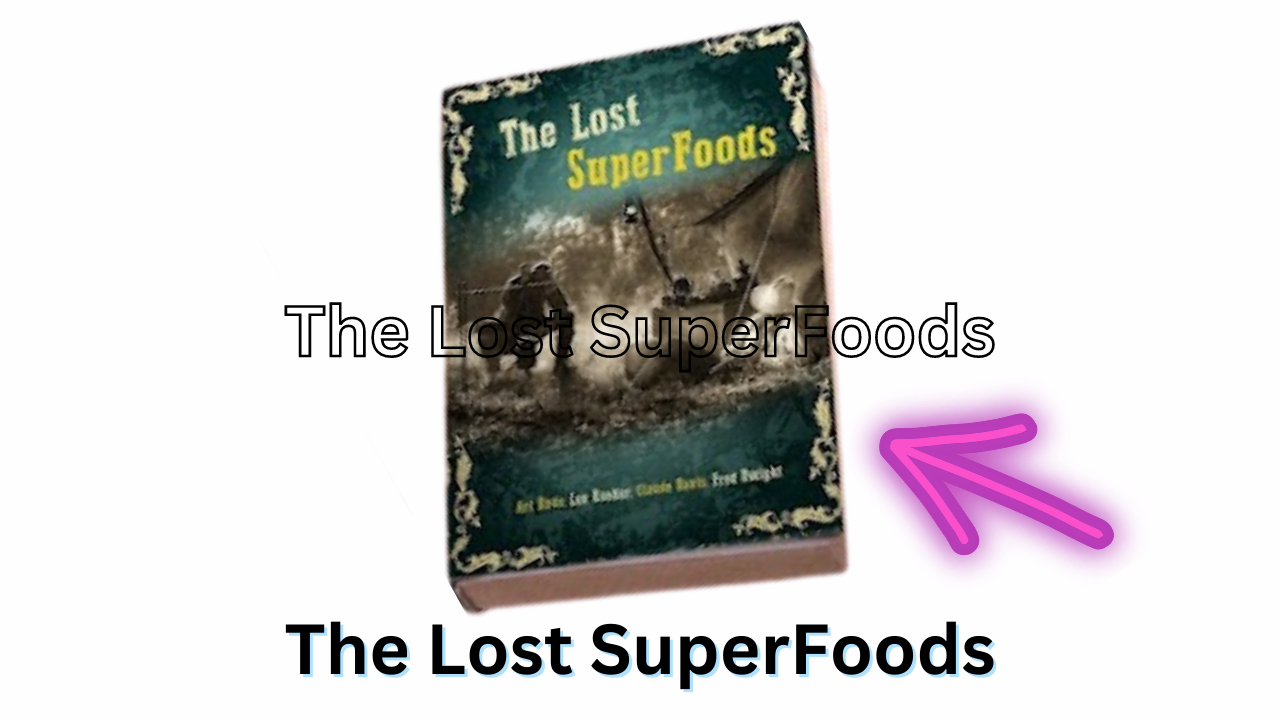Introduction :
The world is constantly changing, but our bodies remain the same. Despite technological advancements, our nutritional needs have not evolved much since ancient times. That’s why it’s essential to look back at the past and learn from our ancestors, who had a deep understanding of what we should eat. The Lost Superfoods Book is a valuable resource that can help us rediscover the forgotten foods of the past and unlock their health benefits.
==>>Want to know the superfoods of our ancestors? Check out our Lost Superfoods Book!
The Origins of the Lost Superfoods Book:
The Lost Superfoods Book is a collection of ancient foods that were once common in the diet of our ancestors but have been forgotten over time. These foods were researched and compiled by expert nutritionists and health practitioners, who recognized their tremendous health benefits. The book is a testament to the power of food as medicine and the importance of looking to our past for guidance on how to nourish our bodies.
What are Superfoods?
Superfoods are nutrient-dense foods that are considered especially beneficial for health and well-being. They are packed with vitamins, minerals, antioxidants, and other compounds that have been shown to support optimal health. Some of the most well-known superfoods include kale, blueberries, and quinoa. However, the Lost Superfoods Book features ancient superfoods that are not commonly found in modern diets.
==>>Want to know the superfoods of our ancestors? Check out our Lost Superfoods Book!
The Top 10 Lost Superfoods You Need to Know:
- Amaranth: a gluten-free grain that is high in protein, fiber, and minerals.
- Camu Camu: a berry from the Amazon rainforest that is rich in vitamin C and antioxidants.
- Chia: a seed that is high in omega-3 fatty acids, fiber, and protein.
- Fermented Foods: including sauerkraut, kefir, and miso, which are beneficial for gut health.
- Kelp: a seaweed that is rich in iodine, which is important for thyroid function.
- Maca: a root vegetable from Peru that is believed to boost energy and libido.
- Mesquite: a flour made from the pods of the mesquite tree that is high in protein and low glycemic.
- Spirulina: a blue-green algae that is rich in protein, iron, and antioxidants.
- Tiger Nuts: a tuber that is high in fiber, prebiotics, and magnesium.
- Turmeric: a spice that contains the compound curcumin, which has anti-inflammatory properties.
==>>Want to know the superfoods of our ancestors? Check out our Lost Superfoods Book!
How to Incorporate Lost Superfoods into Your Diet:
Incorporating lost superfoods into your diet can be easy and delicious. Here are some ideas:
- Add chia seeds to your smoothies, oatmeal, or yogurt.
- Use mesquite flour in baked goods for a nutty, sweet flavor.
- Sprinkle turmeric on roasted vegetables or in soups.
- Make a maca latte by blending maca powder with almond milk and honey.
- Enjoy fermented foods as a side dish or snack.
==>>Want to know the superfoods of our ancestors? Check out our Lost Superfoods Book!
Benefits of the Lost Superfoods:
The Lost Superfoods Book features a variety of superfoods that offer numerous health benefits, such as:
- Boosting energy and vitality
- Supporting immune function
- Improving digestion and gut health
- Reducing inflammation and oxidative stress
- Enhancing cognitive function and brain health
- Promoting healthy skin, hair, and nails
- Supporting weight loss and weight management
- Regulating blood sugar and insulin levels
- Lowering cholesterol and improving heart health
- Preventing chronic diseases such as cancer and diabetes
==>>Get ready to transform your health with our Lost Superfoods Book!
Frequently Asked Questions (FAQs):
Q: Can I find the Lost Superfoods Book in bookstores?
A: Yes, the Lost Superfoods Book is available in select bookstores and online.
Q: Are the lost superfoods expensive?
A: Not necessarily. Many of the lost superfoods, such as chia, turmeric, and kelp, are affordable and readily available.
Q: Can I consume the lost superfoods if I have allergies?
A: It’s essential to check with your healthcare provider before consuming any new foods if you have allergies or food sensitivities.
Q: Do I need to eat all the lost superfoods to see health benefits?
A: No, incorporating even a few lost superfoods into your diet can provide significant health benefits.
==>>Want to know the superfoods of our ancestors? Check out our Lost Superfoods Book!
Affiliate Disclosure:
If you choose to purchase the product suggested by the links included in this product review, we may receive a small commission at no additional cost to you. This helps to fund our editorial and research staff. Please be aware that we only endorse top-notch goods.
Disclaimer:
Please note that nothing stated here should be construed as a substitute for professional medical or financial advice from a qualified financial advisor or a registered healthcare provider. If you use pharmaceuticals or have concerns after reading the above review information, be sure to speak with a qualified physician or financial expert before making any purchasing decisions. Since the Food and Drug Administration has not reviewed the representations made about these products, individual outcomes may differ and cannot be guaranteed.
Conclusion:
The Lost Superfoods Book is a valuable resource for anyone looking to improve their health and well-being. By rediscovering these ancient foods, we can learn to nourish our bodies in a way that is aligned with our evolutionary past. Incorporating these lost superfoods into our diets can help us achieve optimal health and vitality, prevent chronic diseases, and enhance our overall quality of life. So, why not pick up a copy of the Lost Superfoods Book today and start exploring the benefits of these forgotten foods?

